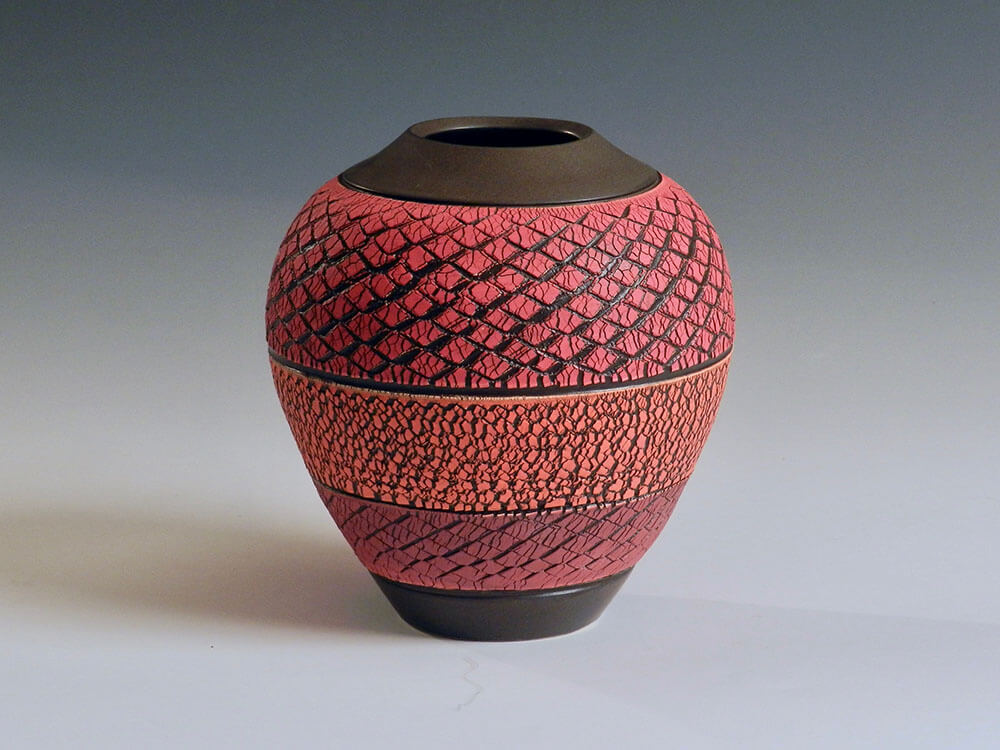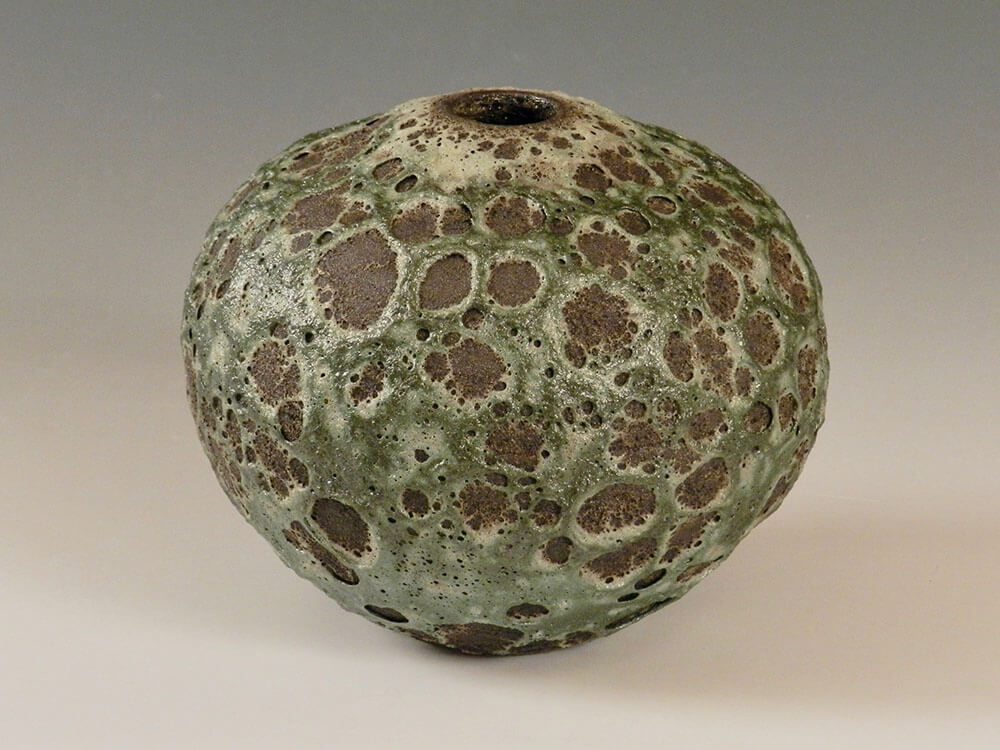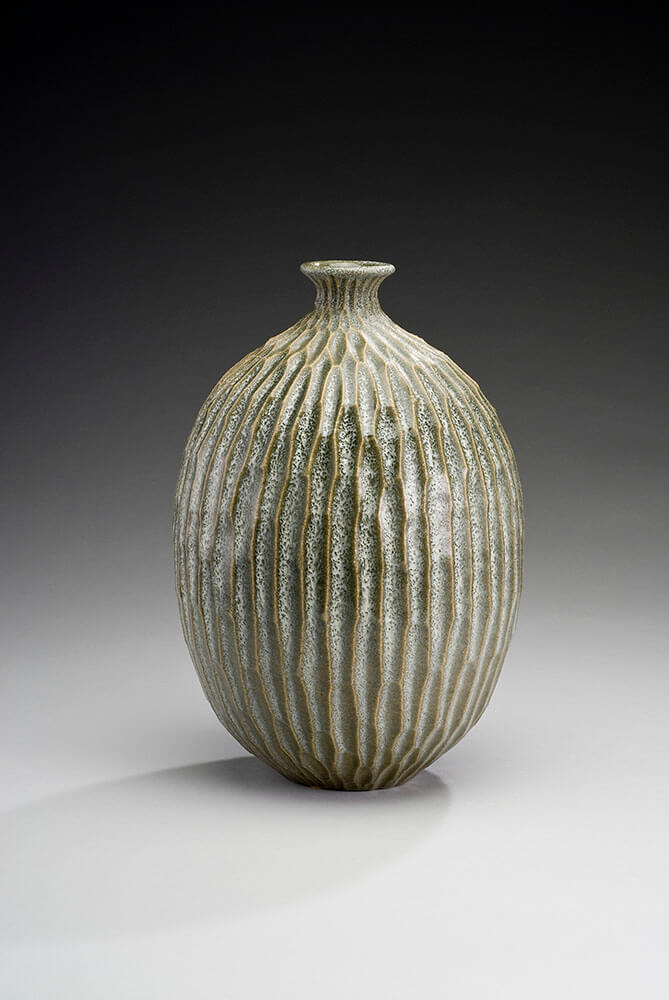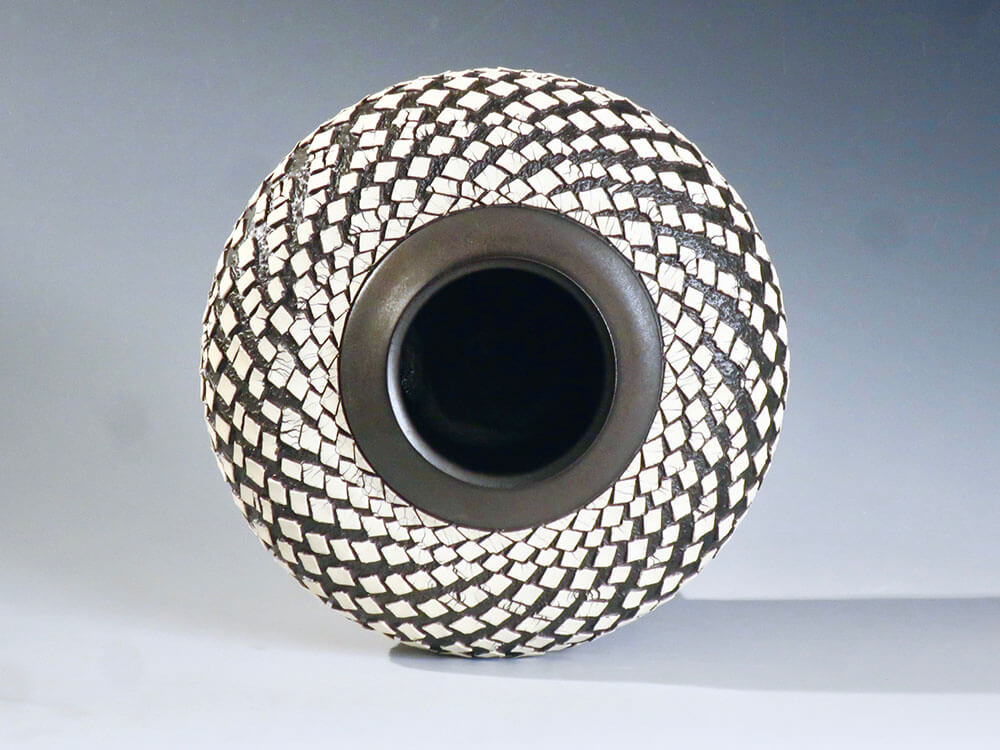Words by Sheryl Nonnenberg
For most people, having a successful and fulfilling career is a life goal. But what if you are lucky enough to have the time, talent and courage to embark upon a second career? Portola Valley Ranch resident Lee Middleman has done just that and the proof can be found in the exquisite ceramics he produces in his home studio.
Born and raised in Baltimore, Lee studied physics at Johns Hopkins University and then at Stanford University, launching his career in making analytical and medical instruments. Years of long hours and extensive travel paid off—Lee holds over 40 patents and was promoted to vice president. But when his company was bought by a large pharmaceutical firm, Lee came to a hard realization—he no longer enjoyed his job.
Lee opted to take a nine-month break and travel, thanks to a “golden parachute” and the support of his wife, Donnie. But something kept calling him back to all the ceramics classes he’d recently taken at the Palo Alto Art Center and Lee realized that the medium he wanted to work with was clay. “I always liked to draw, and I loved watching my father, who was a mechanical engineer, drawing and tinkering,” he explains. “I grew up surrounded by family members who were painters, potters and musicians, so there was encouragement for the arts in the family.”

But why clay? “It’s physical, it’s creative and you can make things that are functional, sculptural or decorative,” says Lee. His favorite way to work is a style he refers to as decorative/functional.
At the end of his break, Lee and Donnie agreed to take a leap. Instead of going back to work, Lee would focus on becoming a professional ceramicist. That was more than two decades ago and the couple hasn’t looked back since.
Lee took his new vocation seriously, attending classes, going to workshops and traveling the globe to learn techniques from recognized masters, many of them in Asia. He soon found his own working method and signature style, which is characterized by classic forms and carefully carved textures. As one might expect from a physicist, Lee’s work is beautifully ordered and carefully finished. “I like things precise; some people call it control, but I call it mastery.”

To create one of his pieces, Lee starts by throwing clay on a pottery wheel and crafting a cylinder shape. He creates the textured exterior using knives, small balls of clay and other objects. Once the deeply rendered impressions are in place, he has to avoid touching the outside again. Working with his hand inside of the pot, he creates the shape he envisions by maintaining a careful balance between the textured exterior and the thickness of the clay wall.
“The most difficult thing is making the edges meet,” Lee says. “The whole process requires a careful feel that I have honed over time.” His favorite shape is one he calls “oblate,” like his piece, “Desert Sunflower.” “The wall is very thin and it is a challenge to get it just right,” he notes.
After the initial firing, the pots are glazed and fired again. Lee says he has his technique down to a science, using just five different glazes that he applies by spraying. His palette leans towards earthy hues of brown, gold, rust and celadon. But even with all of his experience and precision, sometimes things go wrong. “I try things and they won’t work, but I just move on.”
Lee is quick to explain that he never anticipated making a living doing ceramics, but he aspired to be successful enough to allow him and Donnie to travel around the world in search of new ideas and techniques. That goal has been met as the couple has taken multiple trips to Africa, China, Japan, Korea and Vietnam. One unexpected result of these adventures is that Lee felt a need to reciprocate the kindness and welcome he experienced while working abroad with fellow potters.

Lee initiated an informal residency program. Potters—usually two at a time—come to California and stay at his home. For a two-week period, the visiting artists work in his studio and discuss and share techniques. Many of the visitors had never been to the United States and some did not speak much English. Lee and his wife provided room and board and, when not working in the studio, they would show them around the Bay Area. Lee estimates that he and Donnie have hosted around 30 people so far, although the Covid epidemic put a temporary halt to their home-stay program.
As one might expect, it was a learning experience for everyone involved. “A lot of Asian potters also love to cook,” says Lee, so the first field trip with guests is usually to a Korean grocery market where they stock up. Lee and Donnie are planning a trip to China in the fall and hope to reestablish their artistic residency program after they return.
Looking around his tidy, well-organized studio and the adjacent, well-lit gallery space where examples of his work are beautifully displayed, Lee notes that the amount of time he’s spent working with pottery now almost equals his time in tech. While he has leveraged his previous experience in marketing to sell his work through his website as well as on Etsy, Lee says that most of his pieces find buyers through word of mouth. In summer, you can find him at the annual Palo Alto Glass and Clay show, where he’s been a regular participant. He also holds two open houses a year in his studio, with the next one set for December 6 and 7.

In Japan, the concept of Kakko Nintei, or Living National Treasure, has been formalized into a coveted honor for a select group who not only excel at a traditional art form but also dedicate themselves to teaching it to apprentices. The designation comes with an annual grant from the Japanese government to help artisans devote themselves to their crafts. Lee says that he has met a few of these living legends on his travels. “They were interesting men and not arrogant, as one might expect,” he recalls. “Mainly, they feel the need to share and pass on their knowledge.”
Is that a designation he would like for himself? Lee just laughs.
The artist shares that one of the best consequences of his decision to become a full-time potter has been the wonderful experiences he and Donnie have shared on their travels. During a recent trip to Iceland, a region not really known for ceramics, he visited a shop that mainly sold functional pieces. Surprisingly, there were a number of pots that were made using a “crater” technique of glazing that he has experimented with in his own work. He met the artist and she shared her glazing formulas, a generous gesture that he did not expect.
“Making ceramics is a bond,” explains Lee. “My wife says we can’t go anywhere in the world where I don’t have friends or won’t make new friends.”


